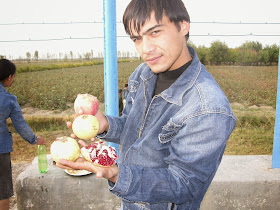Q. Is Buffalograss an acceptable turfgrass for our
climate? I am aware its appearance is
nothing like tall fescue or hybrid bermudagrass. We are looking for a
grass-like look without the high-water use and also the medium to high
maintenance that conventional turfgrass demand.
 |
| One of the improved Buffalograss varieties which compete with hybrid bermudagrass for looks in southern Nevada. |
A. Actually the newer varieties of Buffalograss look as
good as anything else. Buffalograss is similar in its growth to hybrid Bermuda
since both are warm season grasses. In other words, both Buffalograss and
hybrid bermudagrass will turn brown in the wintertime.
Bermudagrass
can be overseeded in the fall to maintain a green lawn during the winter.
Buffalograss should not be overseeded.
The
newer Buffalograsses have come a long way but the problem is getting the good
varieties locally. You would have to order out of state off of the Internet. I
would use plugs rather than seed.
Research
done by Arizona State University has demonstrated that Buffalograss uses about
the same amount of water as hybrid bermudagrass which is 25 to 40% less than
tall fescue. So there would be no water savings over hybrid Bermuda if you were
to plant Buffalograss.
Buffalograss
grows more slowly and requires less fertilizer than either tall fescue or hybrid
bermudagrass. In fact, Buffalograss does not like nitrogen fertilizer and does
more poorly if you fertilize it.
The
advantages of Buffalograss is that you don't have to mow it as often and it
does not require, nor should it ever have, high levels of nitrogen fertilizer
applied to it.
You can
purchase Buffalograss as plugs but make sure you get one of the newer varieties
if you want a well-manicured look to your lawn.
Reputable online source for Buffalograss plugs
I would select University of California's
Verde variety for the desert southwest or desert conditions in general.
The following is from a University of Nebraska publication by Terry Riordon
Vegetative Plugs and Sodding – Stand establishment with sod of
improved turf-type buffalograss will decrease time required to cover the
planted area. Plugs are helpful when early landscape aesthetics or soil stabilization
are important.
Vegetative Plug Establishment – Plugs should be 2 inches or more in
diameter with a minimum depth of 2.5 inches. Spacing between plugs can be
varied, depending upon how quickly full coverage is desired. Vegetative plugs
should not be placed further than 24 inches on center. If site conditions and
preparation are less than optimal, reduce placement interval to provide a full
stand within the first growing season.
During establishment, it is important to keep weeds to a minimum. Periodic
mowing at a 2 to 3 inch height will help minimize weed competition.
Plug condition is important to establishing a successful stand. Plugs
harvested from an established field, placed in trays, fertilized and watered in
a greenhouse or under clear plastic for 4-8 weeks are called
pre-rooted
plugs. For early spring and summer plantings, pre-rooted plugs have been shown
to establish more quickly than those not pre-rooted. Plugs harvested in March,
pre-rooted and planted in May will, under proper growing conditions, establish
an acceptable stand by fall.
Plugs not pre-rooted need 3-4 weeks to initiate growth and may not provide
complete cover by fall. Newly harvested plugs may "go brown" after
planting due to transplant shock. Proper establishment methods can help
minimize this off-color period and insure good rooting of the plug. Applying a
starter fertilizer at 1 lb of phosphorus and 1 lb of nitrogen per 1,000 sq ft
will aid in establishment and growth. Irrigation will not only help maintain
active growth but also will decrease the length of time required for
establishment.
.JPG)
.JPG)
.JPG)



.JPG)
.JPG)
.JPG)




.JPG)



.JPG)


+compressed.jpg)
.JPG)
.JPG)